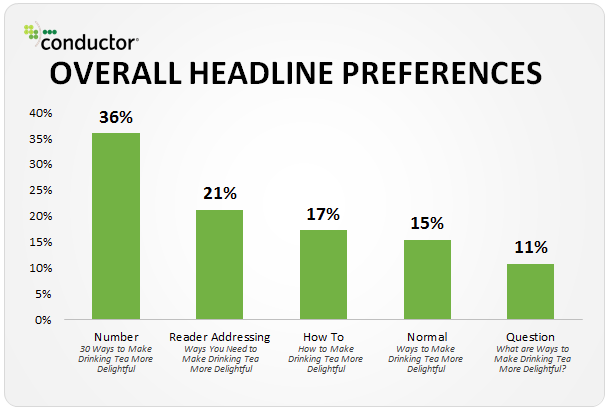Writing a good headline is like being a well-trained chef plating a dish.
You can choose a presentation that’s purposeful and practical if you know your audience wants comfort food. But you also need to know when your audience wants a fancier garnish and presentation. (And alternatively, make sure you’re not delivering them a meal tossed in a greasy paper bag instead.)
At Tower, our Content Team writes a variety of marketing copy daily and we lean into a lot of tried and proven tactics. Keep reading to learn about our favorite headline writing techniques and some practical ways to strengthen your own copy.
What Makes A Good Headline?
While there’s no golden rule for every situation, there are some general guidelines you can use to gauge your headline:
- Does it convey a clear message?
- Does it put the reader first?
- Does it entice the person on the other end to read it?
- Does it use easy-to-follow, jargon-free language?
- Does it feel easy to skim?
If you can check all of those off, you’ve likely crafted a strong headline. However, if one or two remain uncrossed, you need to do some more brainstorming.
The Principles of Headline Writing
As you’re getting started, here are some principles to keep handy and ensure you have a good foundation for your headlines.

Take The Time To Research Your Audience
Don’t assume you know them. Even if you’re familiar with them, you may uncover some surprising insights from taking the time to research.
Look at reviews, online forums, social groups, and anywhere else your target audience is spending time. See how they’re talking about issues your product or service solves. Pay attention to what pain points they bring up and the way they naturally talk about them.
Make Sure Not To Skip These Questions
Take a moment to jot down your answers to the following:
- What emotional response do I want/need to trigger?
- How do I want to connect with the reader in this?
- How can I speak to their struggle or pain point?
- Is there an element of surprise I can use?
Proof Read & Edit Your Headlines
Both are equally important, and yes there’s a difference between proofing and editing. Look at your headline in context with all the other content and ensure it’s grammatically correct, but also logical in its strategy.
Get An Outside Perspective
Oftentimes the most difficult part of the review is to take off the lens of your company and put on the lens of your audience. However, if you don’t do this, you may accidentally cater to the wrong group.
You should make sure you’re speaking like your audience, in order to speak to them. By reviewing from their lens you may notice internal jargon or phrases that need dropping.
6 Writing Techniques To Write Attention-Grabbing Headlines
1. Pick & Use The Right Headline Formula
There are plenty of advanced headline formulas you can find out there to test. Here are some of the basic tried and true ones to consider:
- Question Statement: Position your headline as a question to entice your reader to find the answer in the content below.
- Command Statement: Create a bold and punchy headline that grabs attention by attaching it to a strong action.
- Social Proof: Let others talk for your brand and tease that out in your headline to intrigue your audience.
- News Or Informative: Share information that’s interesting enough on its own and use that to pull in readers.
- Direct Method: State the idea clearly when your readers need to know the practical purpose from the start.
- Indirect Method: Present an idea creatively without spelling it out in a way that’s simple or boring.

2. Lean Into The Right Mix Of Words
Ultimately, the words in your headline are under far more scrutiny than anything else. Your reader is judging the headline to see if they want to continue on or not.
Make sure you have the right mix of words to move them to read more. Avoid jargon and cliches. Stick to concrete words and ditch the vague ones that are hard to visualize (like optimize, leverage, or utilize to name a few of B2B’s favorite crutch words).
You should also lean into finding the right blend of word types detailed below.
Word Types
These are the most used words in the English language that are important to the structure of your headline. This group includes words you need for functional reasons, like articles or prepositions.
Examples: there, your, and, but, from, get
These are less used words that aren’t used as frequently and can add some interest to your headline.
Examples: actually, happened, know, need, new, old, out
Emotional words for headlines stir up a feeling and response in your audience when used in the right way.
Examples: astonishing, blissful, conquer, cure, delight, unusual, ultimate
These are bold word choices that stand out and grab attention. As such they should be used in moderation to ensure they make the right impact.
Examples: unlimited, remarkable, controversial, guaranteed
For real-time feedback on how you’re using these words try using this nifty headline tool from CoSchedule.
3. Use Headline Psychology
If you want to brush up your knowledge here, this is a great read on using psychology in your writing. It has more detail on the concepts we reference too, along with visual examples.
Below are some of our psychology tactics to try and keep handy in your list of headline writing techniques.
Headline Psychology Tactics
If there’s a gap between what’s known and what’s unknown, people will take the next steps to ensure they have all the information.
Headline Example: 3 Surprising Reasons Your Marketing Isn’t Working
People believe that the actions and things others do and say are correct and credible for that situation. (Especially in an unfamiliar scenario.)
Headline Example: “As A One-Person Marketing Team, Tower Is My Right Hand”
Services or resources are considered more valuable if they are scarce. Limitations around the offering make us more likely to take action.
Headline Example: Get This Limited Offer Before It’s Gone!
People overestimate the value of what they own compared to how they’d value something if they didn’t own it. They also prefer to avoid a loss at all costs, which can sometimes feed into the endowment effect.
Headline Example: Don’t Wait To Get Your Free Trial Today
4. Let User Intent & Behavior Drive Your Choices
Especially if you’re writing copy online, headline optimization is a must. Look at Google Trends or any SEO tools you have access to and determine what users are searching.
Pay attention to see if any seasonal patterns or common trends are happening in search. This can be helpful insight even for headlines going on physical marketing materials.
If you’re writing digital copy, make sure you optimize your headlines as well with relevant keywords, to ensure your content performs better in search engines.
5. Write ‘Visually’ & Consider Character Limitations
Think about the way your headline looks, not just what it’s saying. Does it lose its strength if it breaks into two lines instead of displaying on one line? Does punctuation enhance its presentation or detract?
Additionally, consider what you’re writing copy for. If your headline is being displayed in an ad platform, write to fit the character count.
Here are two helpful resources if you’re working on social media ads or PPC ads in particular.
6. A/B Test When You Can
The perfect headline isn’t going to be the first one you write. And sometimes, it may not be the final one you write either!
Always A/B test different types of headlines when you can to see what works better to engage your audience. If you’re writing for your website, social, or PPC ads, A/B testing is easy. However, even if you’re doing traditional mail-out materials, you can always split them up with different headlines.
Just make sure you’re only changing the headlines and nothing else. Otherwise, it’s hard to isolate if it’s the headlines or a different element that performed better.
Watch Out For The Pitfalls Of Writing Headlines
Don’t Sacrifice Clear For Clever
If you focus too much on being creative or humorous, it sacrifices the clarity of what you’re trying to say. But being straightforward can also be boring if you have the chance to be creative. A good headline leans into the direction its readers would prefer or enjoy.
Don’t Create Something Inauthentic
To save time, or maybe even break out of the box, you may feel the impulse to use one of the many “headline generator” tools online or an AI writing assistant. They are a good starting point for brainstorming, but sometimes the results can seem a little “off.”
They often spit out outputs that may not hit the right tone or simply read generically (something likely to make your audience yawn). Use them for ideas, but take the time to polish those outputs and play with ways to make them shine.
Don’t Embrace Click-Bait Tactics
By now, we’ve all clicked on something that had a tempting title but didn’t deliver in the content. A sensational title may grab attention, however, you’ll sacrifice the trust of your audience and taint the reputation of your brand. It’s hard to get trust back — so we recommend you never embrace this tactic.
Enjoying the advice in this blog? Subscribe to our podcast or start a conversation with our team for more helpful marketing insights.
This blog was originally published on June 28, 2017. It was updated on July 19, 2023.
